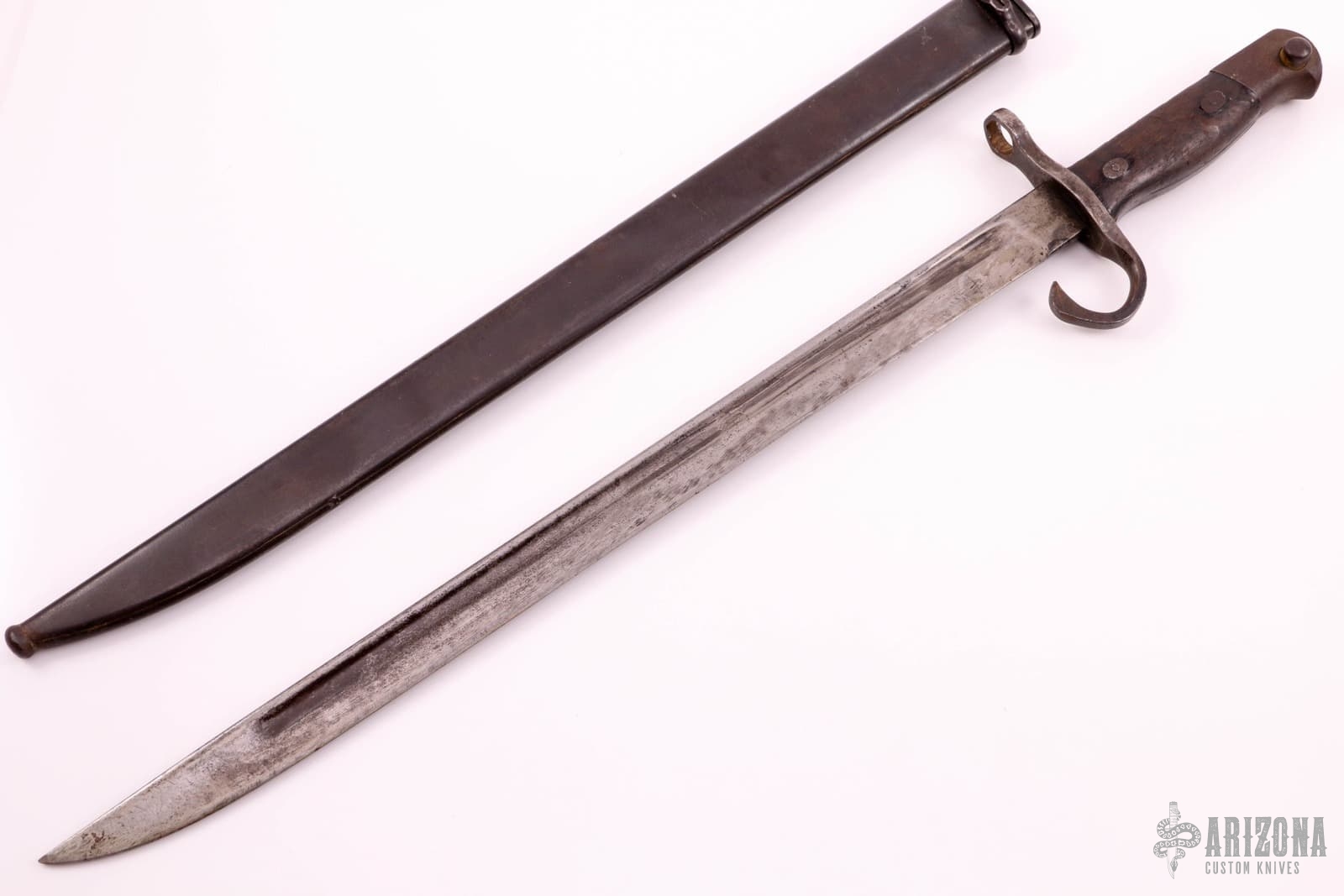

#Type 99 arisaka bayonet series
The IJA high command’s apparent decision to continue recommending usage of the Arisaka series of bolt-action rifles was really no different from that of other belligerent countries the German and British Armies used their older Mauser Gewehr 98 and Short Magazine Lee-Enfield (SMLE) rifle designs, respectively, throughout the war. To illustrate, advancing infantrymen, after crossing the Salween River in Burma in early 1942, attacked at night in the purest martial style, that is, with fixed bayonets and unloaded rifles, in an attempt to intimidate the enemy. Thus, the general staff approved the design of the infantryman’s weapons based on close-order combat, where he was programmed to always advance, keeping the enemy unnerved and off balance. The IJA high command consistently resisted weapons modernization, fearing that it would lead to the infantry’s abandonment of tradition of hand-to-hand combat to win the decisive victory. A reliance on material goods, necessitating an extensive supply network, was viewed by the dominating forces within the Japanese high command as a modern evil that could destroy the fighting spirit of the IJA.
#Type 99 arisaka bayonet code
During the 1930s, the Japanese high command falsely believed that an army based on the Bushido code would not be hampered by Japan’s inadequate industrial base because it required neither state-of-the-art mechanization nor a cumbersome logistical tail. Much has been written that the Japanese infantry weapons of World War II were poorly designed and manufactured and ineffective in combat. His personal infantry weapon, the Arisaka rifle, would give him the means to exhibit these traits. Bushido contributed significantly to a soldier’s supreme sacrifice, which demonstrated the qualities of honor, courage, and moral purity. Thus, the Japanese soldier was well known for his disregard for death. Above all, the new IJA infantryman would be imbued with a combination of obedience to the emperor and a moral essence to strictly adhere to a superior’s orders and the warrior code, Bushido, while refusing to disgrace himself and his family by surrendering to the enemy. Training units seldom conducted combined arms operations since the military dictum was that infantry would win decisively by closing with the enemy with bayonet assaults. Officers and noncommissioned officers (NCOs) began to indoctrinate the Japanese fighting élan into their conscripts through close combat training with an inordinate amount of time spent on bayonet fighting and hand-to-hand combat. After harsh and rigorous training with other cadets from his geographical district in the home islands, the new soldier was designated to a specific class ranking dependent on his capabilities.

However they did reappear for some time during the Chinese Civil War, Korean War, and even Vietnam War.As militarism grew in Japan in the early 1930s, conscription began at the age of 19, and the Imperial Japanese Army (IJA) cadet entered military service. The Type 99 saw production by Japan until the end of World War II. The Type 99 began production in 1939 and it was designated the Type 99 because in the Japanese culture, the weapon was created in year 2099. This was made apparent during the Japanese invasion of China. The main driving force behind this change is the serious need for a change in calibre. The Type 99 had its origins in the Type 38 and Type 30 Rifles and it was meant to replace the outdated and outmatched rifle. Another Variant is the Type 2 Paratrooper version, although this version also saw limited use. Even so, it was still used as a sniper rifle.

The Short barrel version became standardized while the Long Rifle didn't see extensive use. It also came in a number a variants including the Type 99 Long Rifle and the Type 99 Short Rifle. A bayonet could be fitted onto the end for close quarters combat. The muzzle velocity of the Type 99 was about 730 m/s and it also featured a special safety mechanism. The Type 99 eventually became the standard bolt-action rifle of the Imperial Japanese Army. The Type 99 was chambered for the 7.7x58mm Arisaka Cartridge and had a length of about 1.1 meters. It had a 5 round magazine and a weight of about 3.7 kg. The Type 99 'Arisaka' Rifle was a bolt-action rifle utilized by Imperial Japan during World War II.


 0 kommentar(er)
0 kommentar(er)
